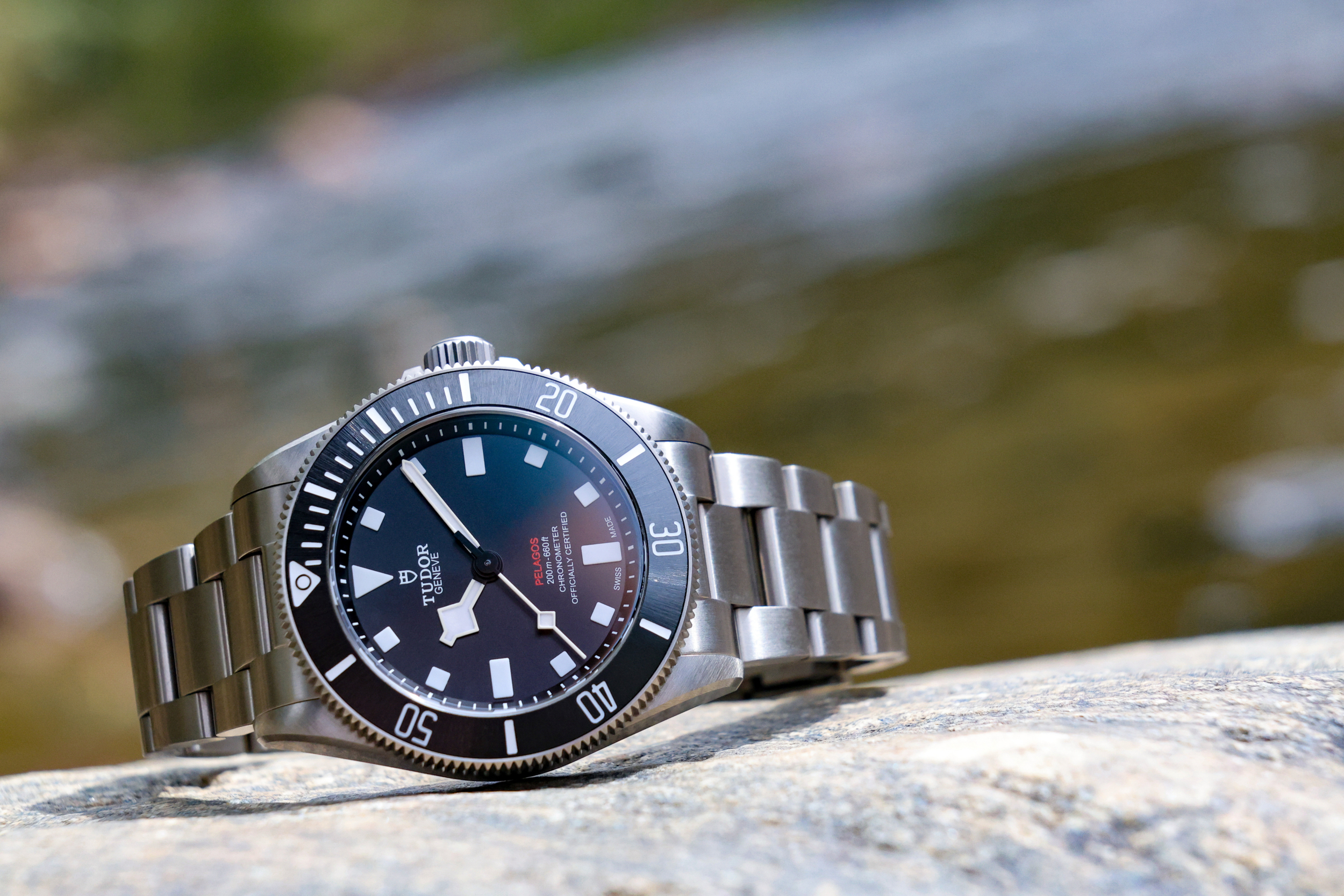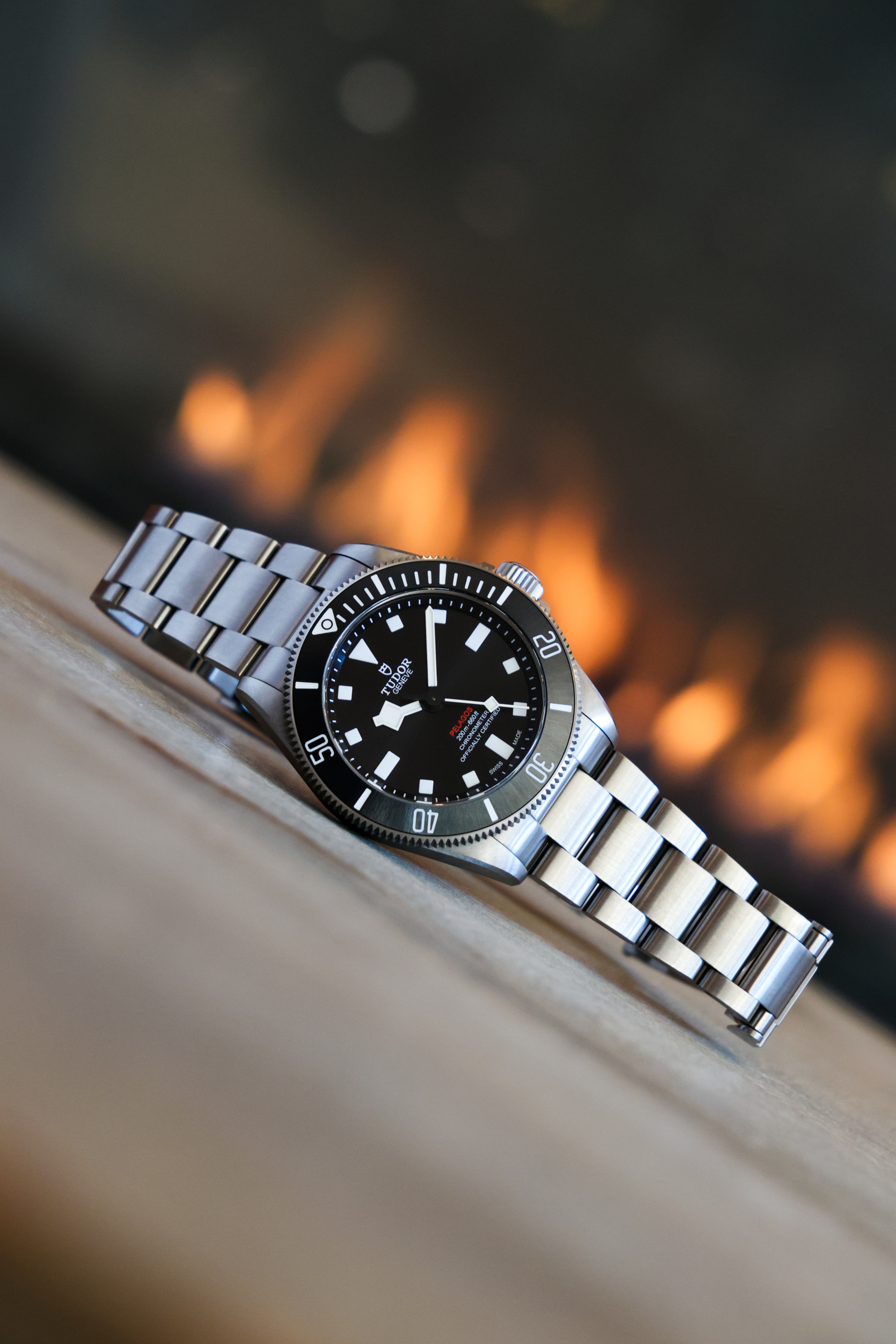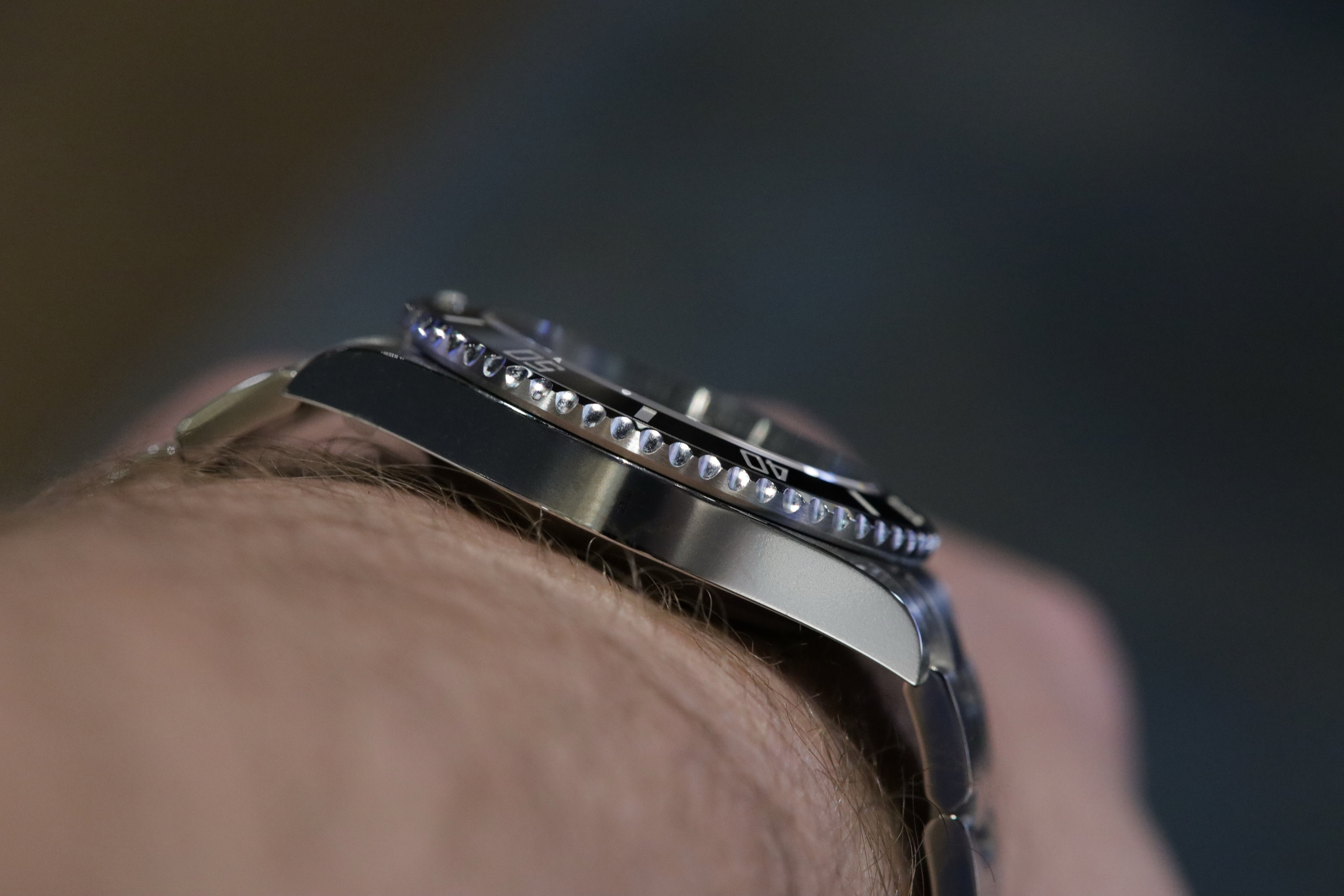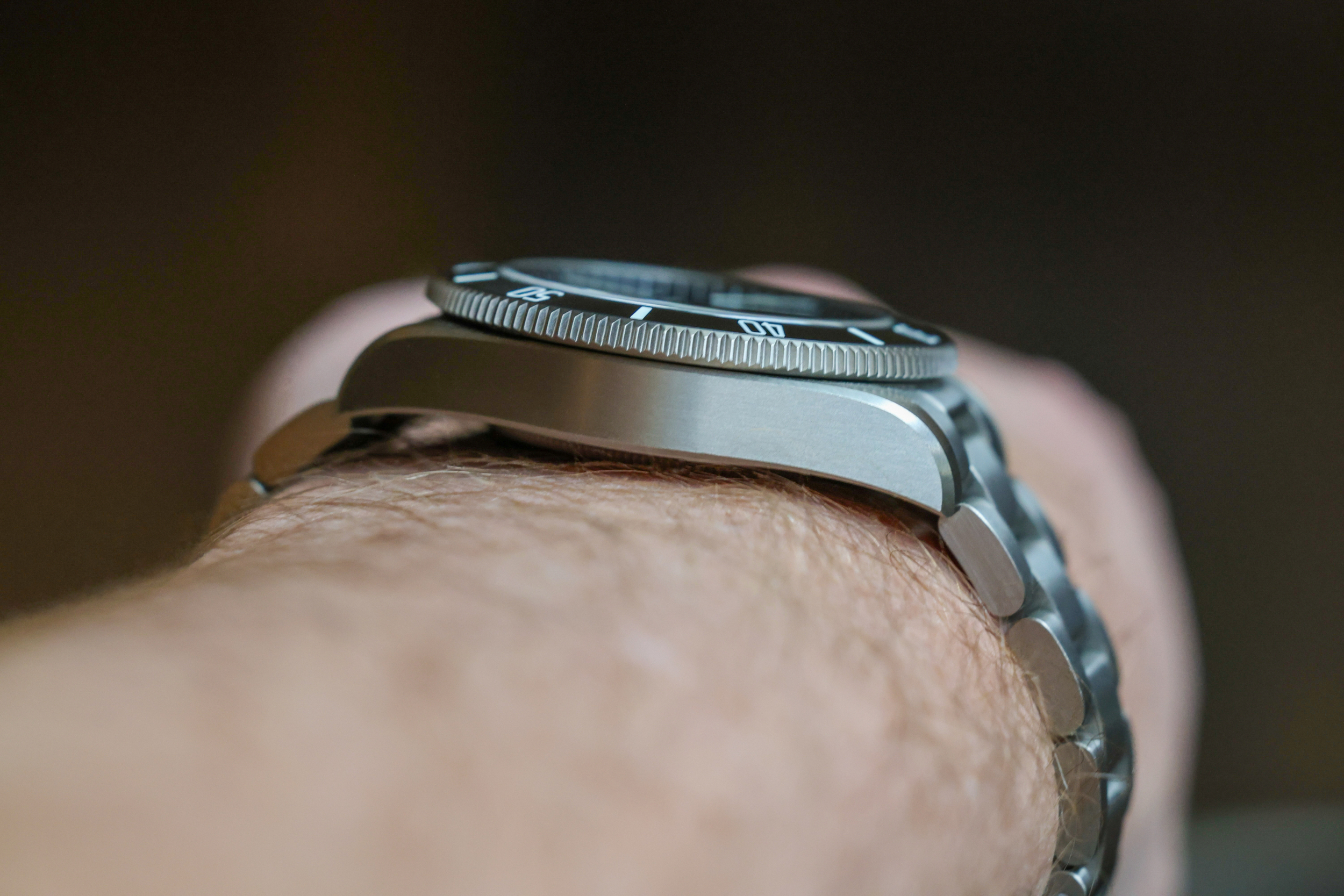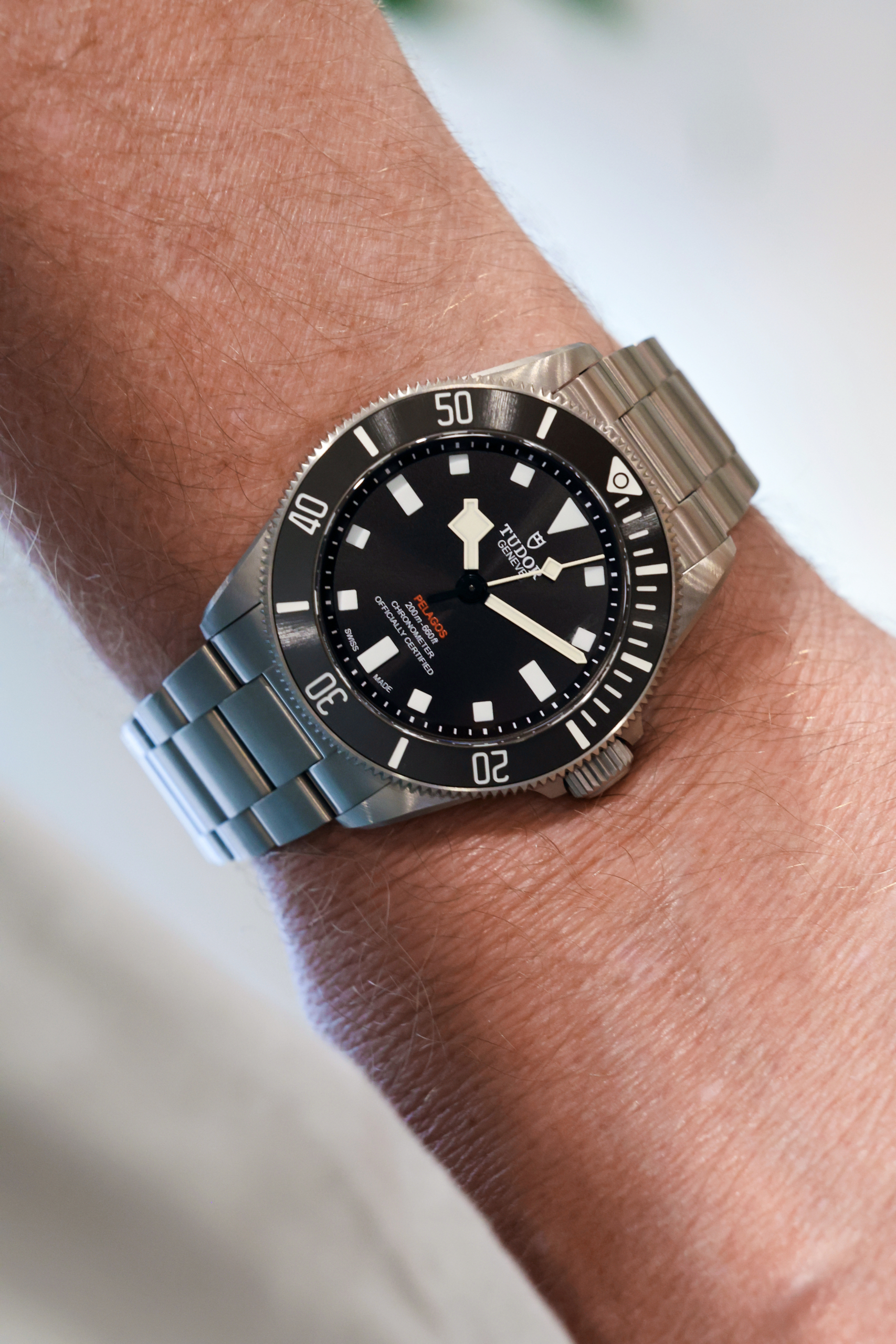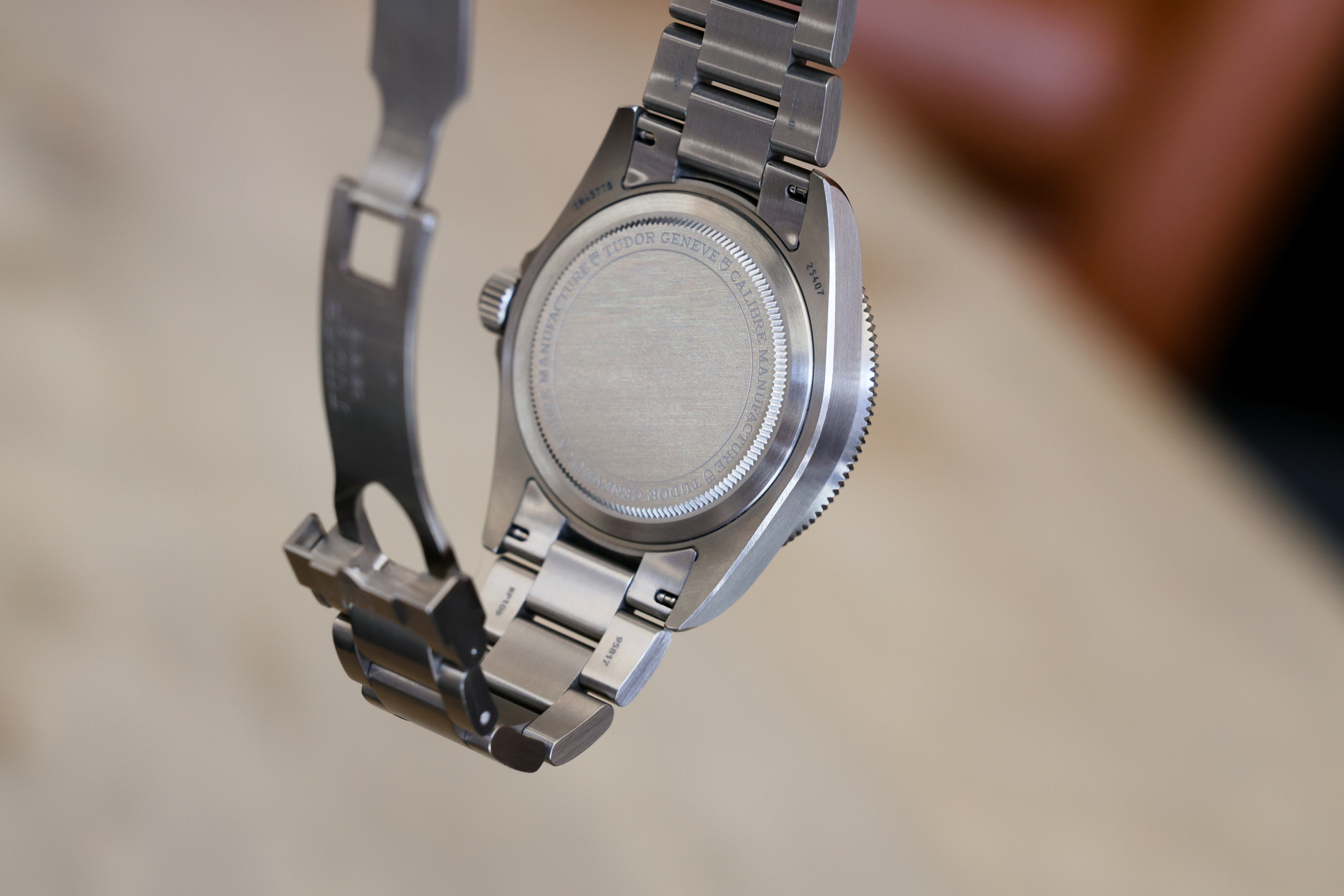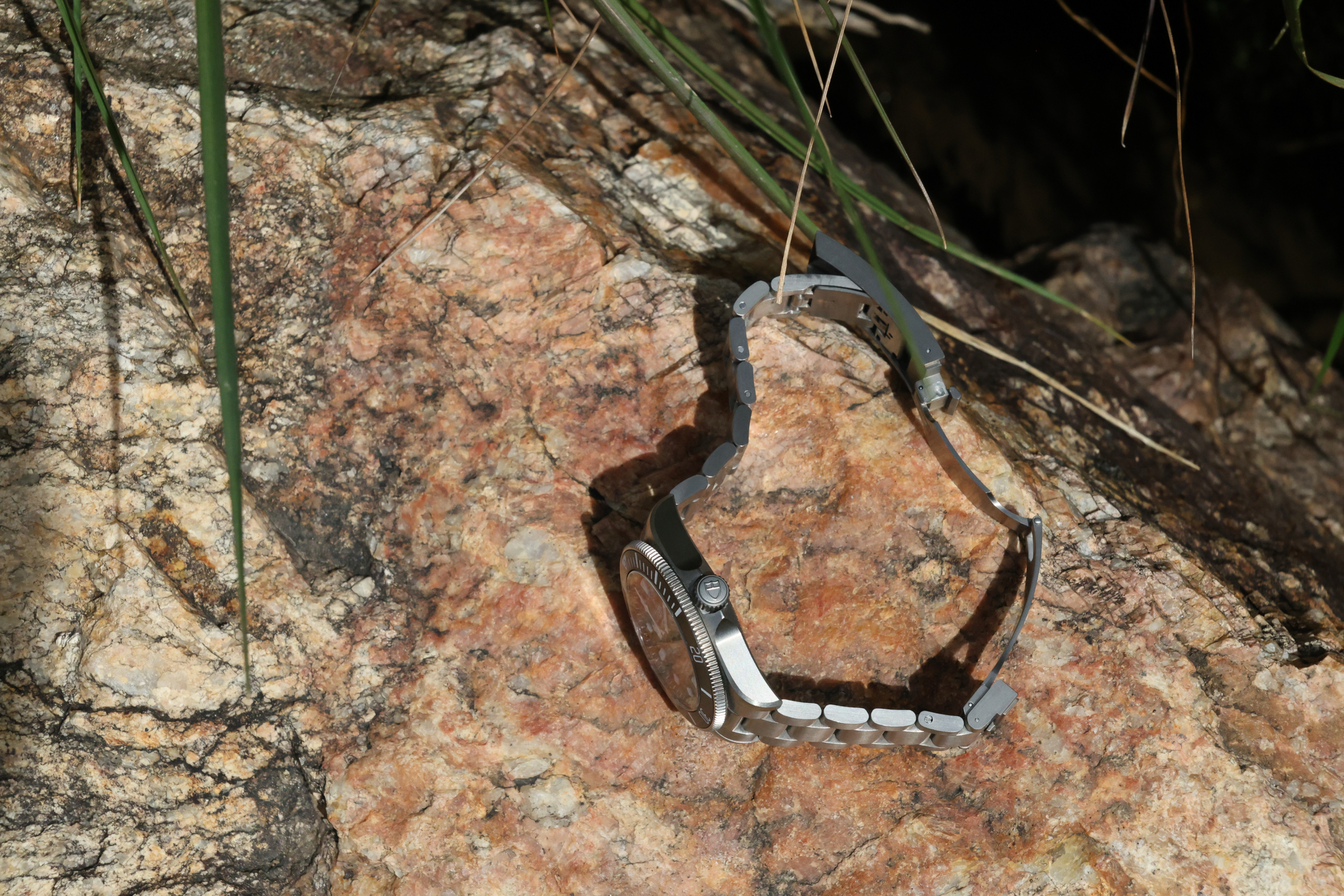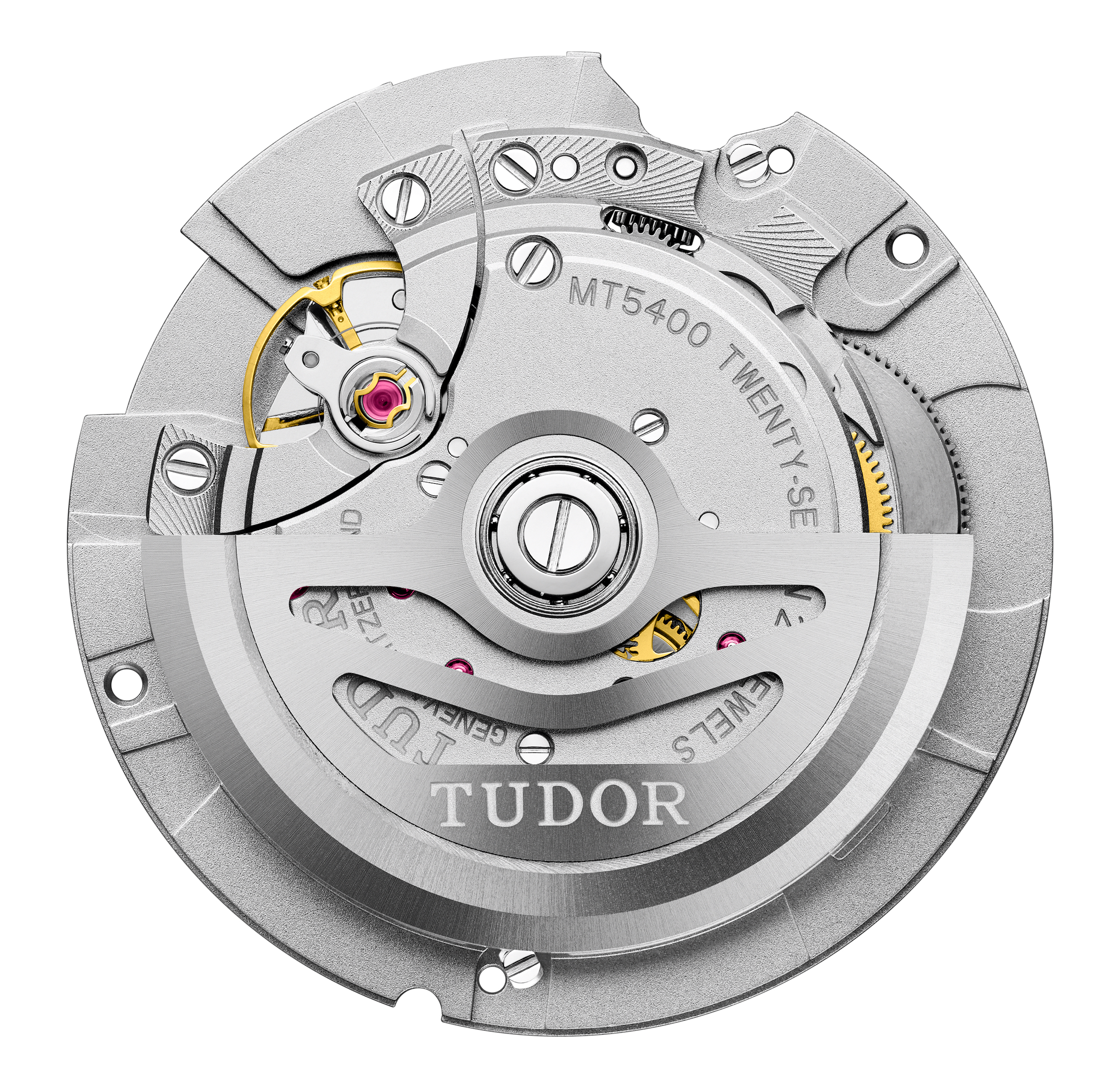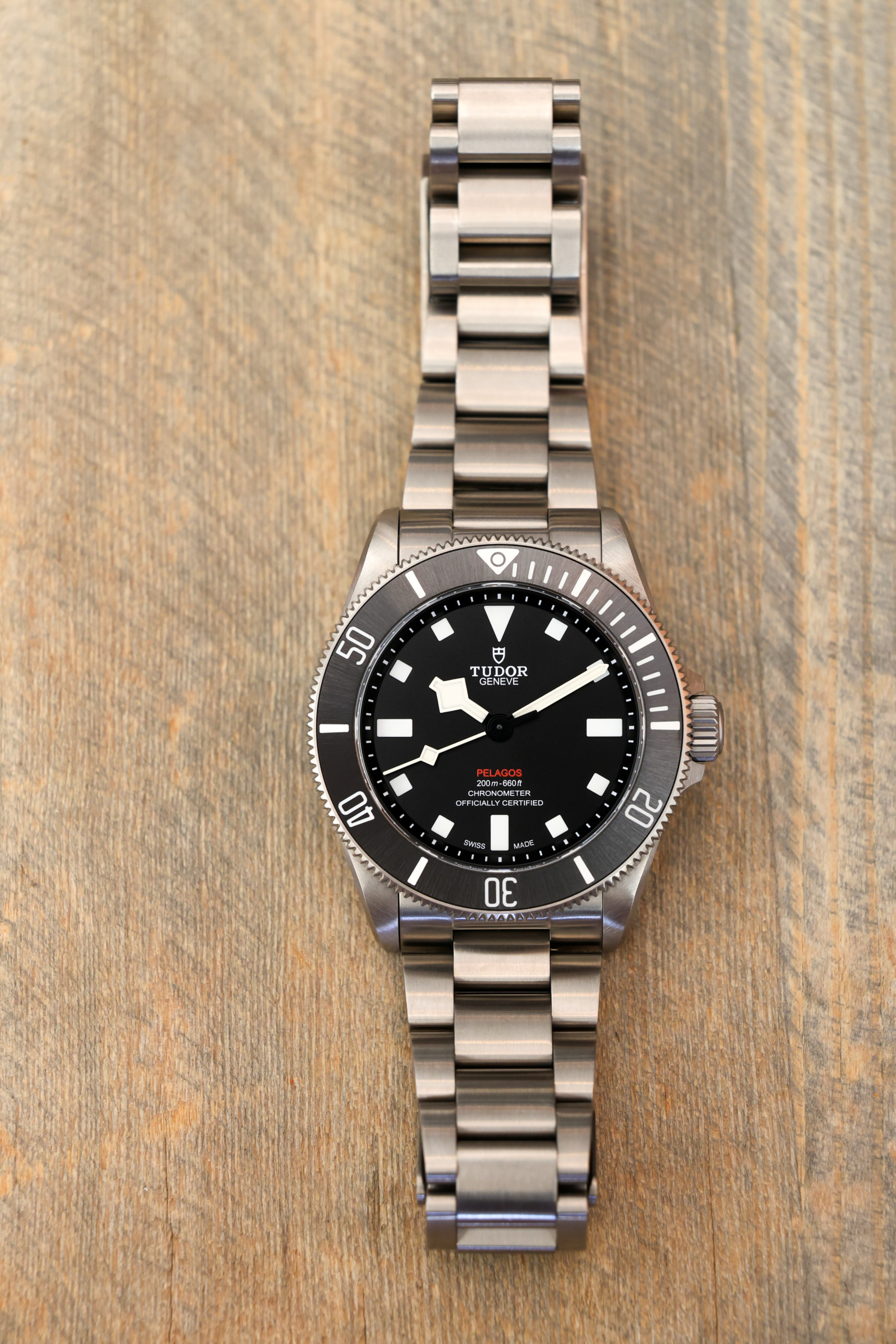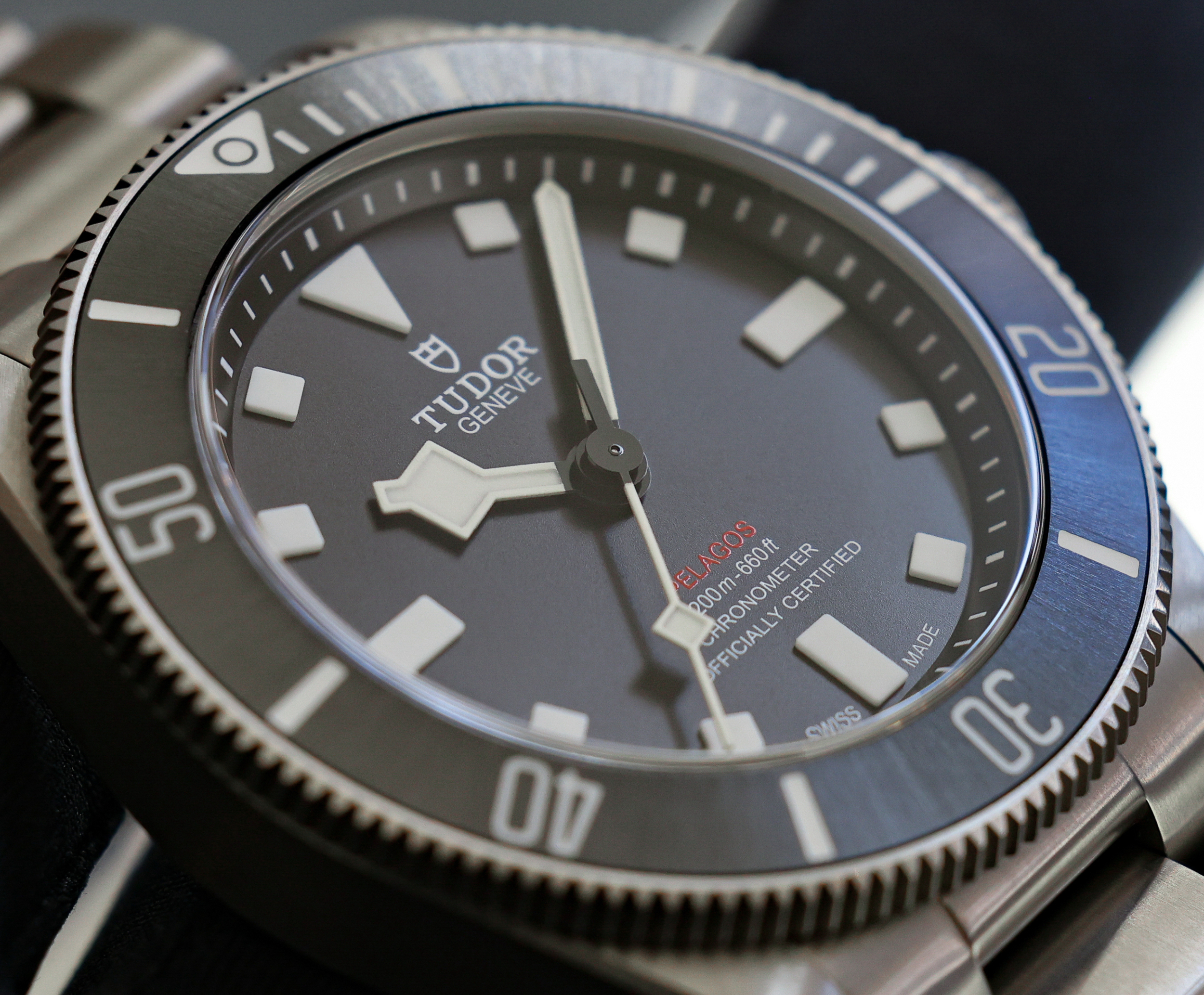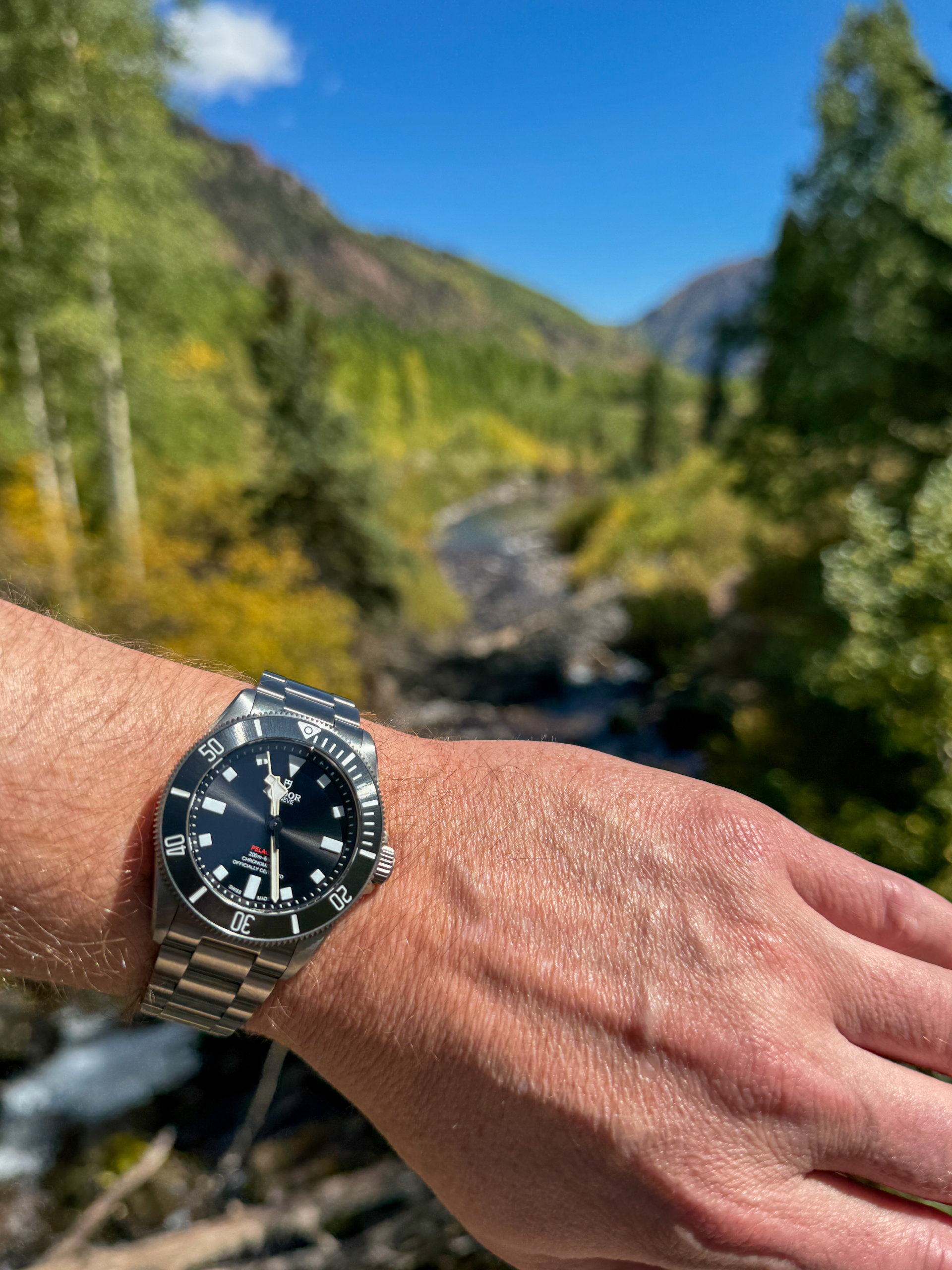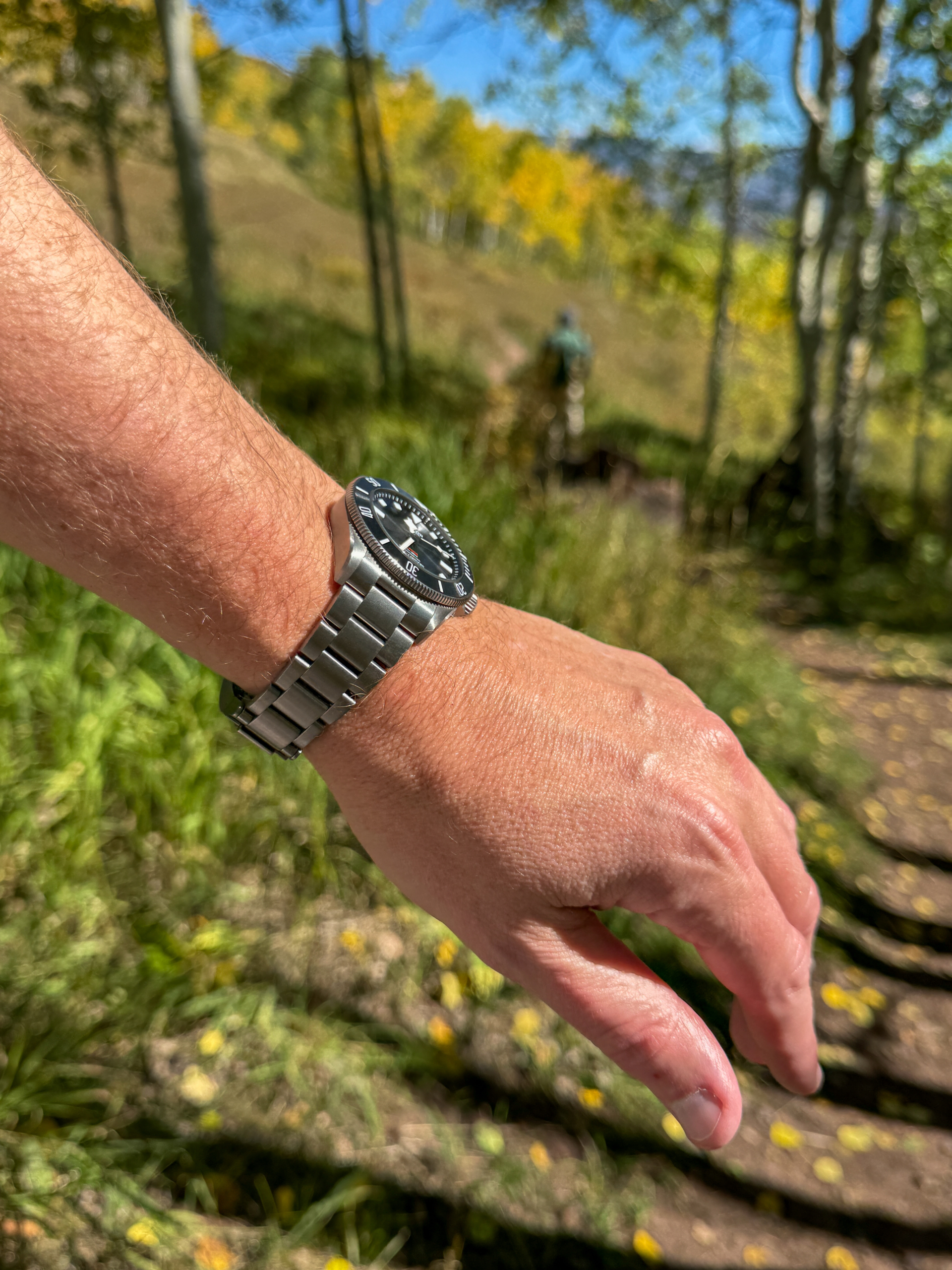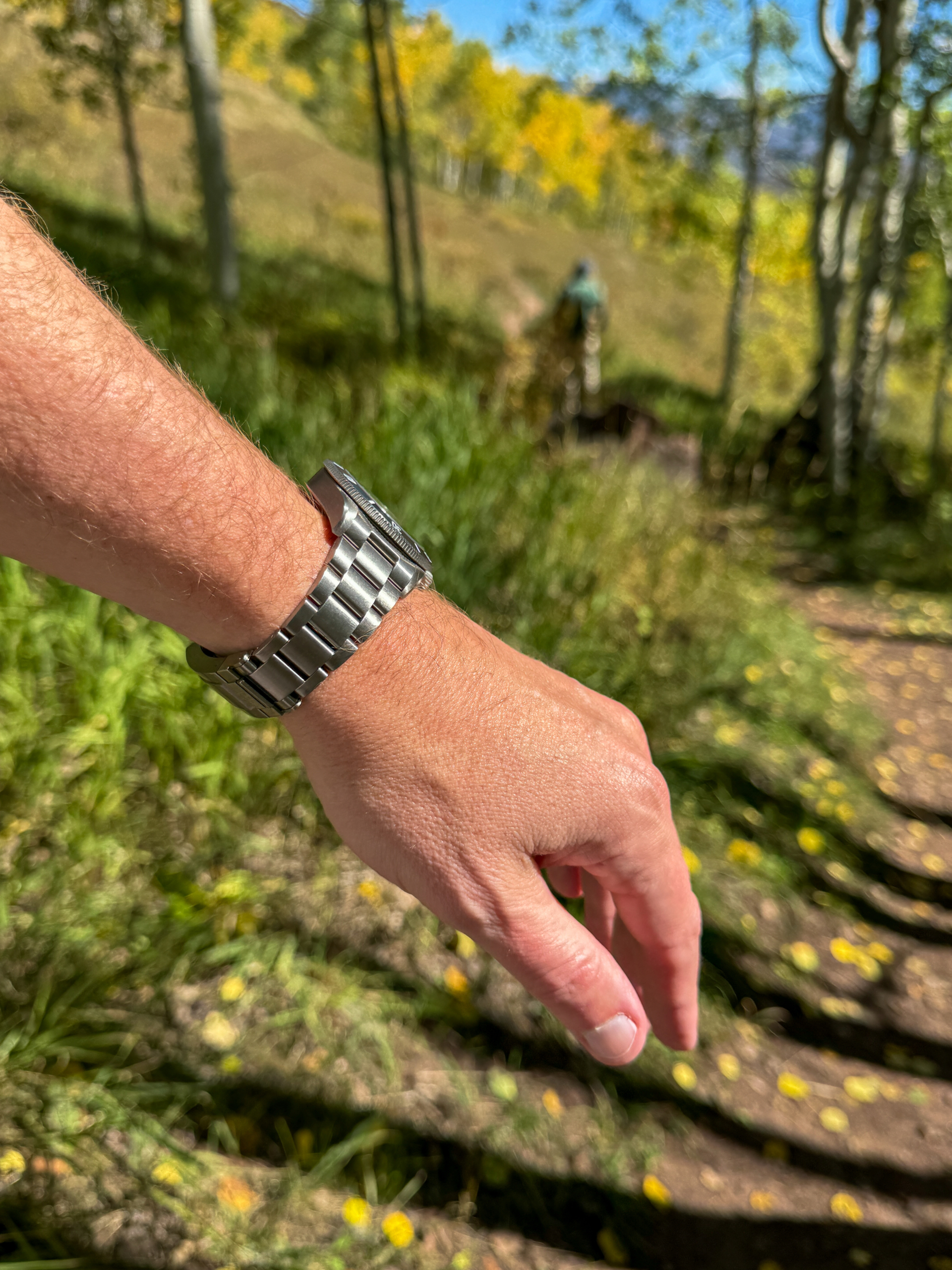This in-depth field review was created during a week-long hiking trip, with Tudor’s highly engineered professional dive watch, the Pelagos 39, on my wrist.
Destination Brief
Pelagos is a term derived from the Greek word πέλαγος (pélagos), meaning “sea” or “high seas.” In ancient times, Pelagos referred to an oak forest on the road from Mantineia to Tegea. Interestingly, in addition to the famous Aspen trees, Oak trees are also found within the Snowmass Wilderness White River National Forest, where the Maroon Bells are located, serendipitously connecting with the name Pelagos.
The Maroon Bells are a pair of bell-shaped peaks (Maroon Peak and North Maroon Peak), both fourteeners, in the Elk Mountains near Aspen, Colorado. They’re a prominent feature in the Maroon Bells-Snowmass Wilderness, and one of the most photographed sites in North America.
Aspen trees are special for not just their gorgeous leaf colors (lime green, yellow, and orange), but also because their distinctive “quaking leaves” produce a whispering sound in the wind. “Aspens” are also known for their white trunks and ability to reproduce via root sprouts, forming large genetically identical clonal colonies. They play a crucial role in forest ecosystems because they quickly regenerate after fires, providing food and habitat for wildlife.
Trip Notes
Starting in Denver, earlier this month, I drove approximately 3.5 hours to Aspen, during a time of year when the weather is optimum. The combination of bright sun, crisp mountain air (natural air conditioning), and minimal traffic (weekday) made the road trip as enjoyable as the destination. With the iconic Aspen leaves in bloom — all over the Rocky Mountain region, not just Aspen — and sunny 60-70 degree highs each day, I could not have asked for better weather. I visited many locations on this journey, including Aspen, Maroon Bells, Snowmass, Snowmass Nature Trail, Beaver Creek, the Eagle River, the Colorado River, Lake Dillon, Clear Creek Canyon, Georgetown Overlook, Lookout Mountain, and ended back in Denver. The majority of the photographs shown were taken at Maroon Bells in Aspen-Snowmass, Colorado. In total, I spent approximately two weeks with the Pelagos 39 (Ref. M25407N-0001), both in the city and in the mountains, before returning the loaner unit to Tudor USA.
First Impressions
Tudor’s Pelagos collection currently comes in three sizes, making it easier to tailor-fit the look and ergonomics to different wrist shapes, sizes, and personal preferences (like a properly fit suit jacket). What stood out to me the moment the Pelagos 39 arrived was how much the case size and proportions resemble a Rolex Submariner. The Submariner is a rugged yet thin sports watch — a refined dive watch — which makes the fact that they’re so close in size a huge benefit of the Pelagos 39 design. Upon first taking hold of it, I instantly knew I had chosen the correct model and that the (39 mm diameter case) was unquestionably the right size for my 7-inch wrist. Tudor also makes 42 mm and 43 mm diameter Pelagos models.
Comparisons To Submariner
On more than one occasion, I’ve heard Tudor referred to as the “poor man’s Rolex,” and that’s not entirely inaccurate, especially considering it’s Rolex’s better-priced younger sibling. However, crucially, unlike some of the blockier earlier generation Pelagos models, the Pelagos 39 mm, which arrived in 2022, does not look or feel like a poor man’s anything. I would go so far as to say it’s perhaps the most refined Tudor to date, and just as good as a Submariner that’s been crafted from titanium, except for the fact that the Submariner’s not offered in titanium. The Yachtmaster is the closest thing you can get to a titanium Submariner with the Rolex name on the dial. If you’re willing to sacrifice some of the prestige and inherent value retention, Tudor’s Pelagos 39 offers 80% of what makes a Submariner great (see our review of the Submariner for reference), at about half the price.
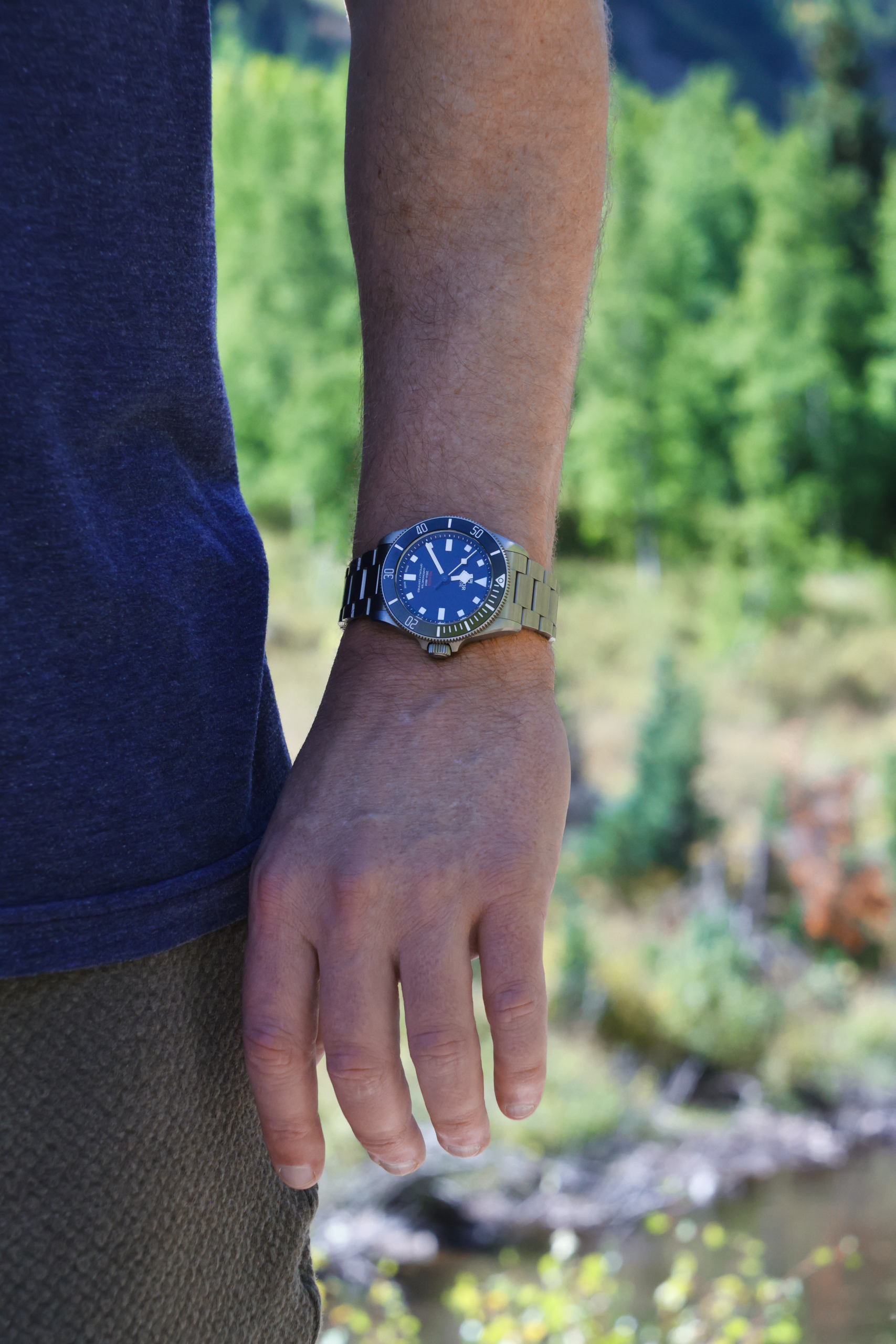
Bracelet and Strap
The Pelagos 39 comes with a 3-link Oyster-style grade 2 titanium bracelet that tapers from 21 mm at the case to 16 mm at the smallest links, featuring a Tudor “T-fit” folding clasp that’s 18 mm wide, a safety catch, and a diver’s extension. In addition, a black HBNR rubber strap (a material you can learn more about here) with a pin buckle and a diver’s extension is included. There are no quick-release spring bars, so you’re best option to change this is with a tweezer-style spring bar removal tool. Having a 21 mm lug width versus the more standard 20 mm is not ideal, but there are still straps available in that size, including rubber straps molded to the exact shape of the case. The lightweight grade 2 titanium bracelet is excellent. The T-Fit clasp micro-adjustment can come loose sometimes; however, overall, it’s nice to be able to manually adjust back and forth, with ease, as your wrist size changes. Bear in mind, this system does add thickness to the clasp, although I never found it cumbersome or a problem.
Titanium Case
Machined from lightweight Grade 2 titanium, the Pelagos 39 mm case measures 39 mm in diameter, as the name suggests; however, with the bezel protruding over the edge, it effectively wears like it’s 40 mm in diameter. From lug to lug, the distance is 47 mm. Thickness is stated at 11.8 mm; however, we measured multiple times with two different types of calipers, and it’s actually 12 mm, which means Tudor likely subtracted the thickness of the flat sapphire crystal, which protrudes about 0.2 mm above the plane of the bezel. Either way, this is the thinnest Pelagos available.
Grade 2 titanium is a commercially pure unalloyed material that’s slightly darker than Grade 5 titanium or stainless steel. It has a satin-like oxide layer, and in certain light it looks like stainless steel, whereas in other light it looks like it has a smoked gray appearance.
Compared to grade 5 titanium, which is alloyed and has a silver-gray appearance and is harder, Grade 2 is softer and more prone to scratching, although it does not seem to be problematic in this regard, and it’s worth noting that all watches will gain scratches over time.
Compared to 316L stainless steel, grade 2 titanium is generally more expensive, and even compared to Rolex’s highly coveted 904L stainless steel, grade 2 titanium costs more. That makes the Tudor Pelagos unique.
In addition to being lightweight and darker than 316L or 904L stainless steel, grade 2 titanium has a warmer feel against the skin because it has significantly lower thermal conductivity. Lower thermal conductivity means that titanium transfers heat away from your skin at a much slower rate. Stainless steel has a higher thermal conductivity and thus is a better conductor of heat; it pulls the warmth from your skin more quickly when you first touch it, creating a colder sensation. This difference is why titanium is often preferred for medical implants and watches, as it feels more comfortable against the skin. Over time, both metals will eventually reach equilibrium with your body temperature. However, the initial difference in how quickly they transfer heat is what creates the distinct sensation.
Another benefit of titanium is that it’s more hypoallergenic than steel because it does not contain nickel, a common irritant, and forms a protective oxide layer that prevents reactions with skin. Titanium is a biocompatible material, meaning it’s well-tolerated by the human body.
Tudor gave the Pelagos a solid Grade 2 titanium screw-down crown that measures 7 mm in diameter, and that has ridged edges that are easy to grip. At the end of the crown is the Tudor shield emblem, raised in relief. When you unlock the crown and pull it out to wind the mainspring manually or set the time, you will see one of the black gaskets that help keep water out. Pulling out the crown stops the seconds and allows you to set the time with “to the second” precision. As an interesting design detail, Tudor gave the Pelagos 39 pointed crown guards, making it less likely that you would inadvertently unlock it, and further tying it to the Submariner, and providing one more reason to love the design.
In-House Movement
The Pelagos 39 features a 4Hz in-house Tudor/Kenessi (caliber MT5400) automatic 27-jewel movement that’s a COSC-certified chronometer, not the newer METAS-certified Master Chronometer. This matters, but not that much, considering it still offers incredible chronometer precision and a 70-hour power reserve, which can be recharged by winding the crown manually, or by the bidirectional rotor that automatically winds the mainspring in both directions. Despite COSC-certified chronometers being required to run at -4/+6 seconds per day, Tudor states that this movement is regulated to a more precise -2/+4 seconds per day, and it’s done fully cased up, no less. After wearing the Pelagos 39 for two weeks, I found the timing to be dead accurate every day, and even when I set it down for a while, the power reserve never ran out. A traversing balance bridge, which is far more robust than a single arm bridge, supports the balance wheel, which has variable inertia weights, allowing watchmakers to precisely regulate the timekeeping. A silicon balance spring resists magnetic interference, adding to timekeeping stability. This is a rock-solid movement, which, as far as I can tell, is as good as any Omega or Rolex, and that’s saying a lot.
Dial and Bezel
Tudor gave the dial a matte black sunburst finish, which I found in most light, looks like a sandblasted surface, but when the sunlight hits it right, you can see the subtle sunburst pattern.
The angled flange has been sandblasted to contrast with the dial. A simple white and black minute-second track denotes the small time increments. When coupled with the large white hands, it’s simple to read at a glance. There’s no date on this model, making setting the time and reading the dial a flawless minimalist experience.
Tudor’s use of monobloc luminescent ceramic composite hour markers provides excellent luminescence; however, not having metal on the hands and indices, for a watch this price, is hard to get used to. I’m sure Tudor has tested long-term durability; however, it does make you wonder if this is not just a performance feature, but also an element designed to cut costs.
The brightness of the lume is excellent. There’s also lume added to the dive bezel markings, which is nearly as bright as the ceramic elements on the dial. One area where Tudor could have improved the luminescence would have been to differentiate the color of the minute hand by using a slightly different emission color, which is seen on many dive watches, including the high-performance Omega Seamaster Planet Ocean 600M, which we reviewed.
Featuring a 60-click high-precision actuation, unidirectional rotating grade 2 titanium bezel with a matte black sunburst ceramic insert, engraved with luminous count-up dive markings, and saw-like grooves for excellent grip and operation even with gloves, Tudor did an amazing job with the bezel.
Field Notes
This professional dive watch is rugged and designed for almost any environment you throw at it, like a field watch, including functioning as a compass, aided by the rotating bezel. To use an analog watch as a compass, you point the hour hand at the sun, and then find the midpoint between the hour hand and the 12 o’clock position on the dial. In the Northern Hemisphere, the midpoint indicates south, while in the Southern Hemisphere, it indicates north. A rotating bezel allows you to mark the north or south bearing, to better keep track of your direction.
On the wrist, the Pelagos 39 fit perfectly and felt as if it were barely there. The T-Fit clasp does add thickness to the underside, but not in a way that felt cumbersome. It also seems to balance out the bracelet look and give the watch more presence.
Reading the dial at a glance in every condition, from bright sun to total darkness, was simple, thanks to the large hands, indices, and great luminescence.
For good measure, I briefly tested the Black Bay “Monochrome” to compare it with the Pelagos 39 at Tudor Denver, which is run by The 1916 Company, before going on my journey. At $4,800, it’s $200 less than the Pelagos, and looks quite nice, with a more showy appearance and more heft and wrist presence. Comparatively, the Pelagos is slightly smaller and much lighter, thanks to being crafted from grade 2 titanium versus 316L stainless steel. The Black Bay Monochrome, which measures 41 mm in diameter, and Pelagos 39, which is 39 mm (40 mm with the bezel), are the two Tudors I find to fit my wrist and look the best. And both clearly resemble the legendary Rolex Submariner; however, for me, the Pelagos 39 gets the slight nod thanks to its tool watch appearance and feel, and premium lightweight titanium construction. Overall, the Pelagos 39 case and bracelet look most like a Submariner, despite the Black Bay having the Rolex-style metal hour marker surrounds and hands.
Pros
-
- Looks incredibly close to a Rolex Submariner
- Exudes quality in every detail
- Subtle luxury with no polished components keeps this under the radar
- Elegant mixture of brushed, sandblasted, sunburst, and satin finishes
- Comes with both a grade 2 titanium bracelet and an integrated rubber strap
- Case material is warmer to the touch than stainless steel
- Grade 2 titanium has a slightly darker hue than stainless steel
- The lightweight grade 2 titanium feels like nothing on your wrist
- Ergonomic design makes wearing this a joy
- T-Fit clasp is easy to micro-adjust in 4 x 2 mm increments
- Diver extension is great for those actually using it for diving with a wetsuit
- Grade 2 titanium screw-down crown is easy to adjust
- 60-click bezel has grippy notches and an excellent mechanism that’s a joy to operate
- Monobloc ceramic luminescent material glows incredibly bright
- COSC-certified chronometer, adjusted to better than chronometer specs of -2/+4 seconds per day, fully cased up, which exceeds COSC standards of -4/+6 seconds per day before being cased up
Cons
-
- The factory bracelet and strap do not have quick-release spring bars
- A 21 mm interlug width makes aftermarket straps harder to find
- COSC-certified but not a METAS-certified Master Chronometer
- T-Fit clasp can inadvertently adjust, especially when taking it on/off
- T-Fit clasp adds bulk to the underside
- Diver’s extension can open inadvertently when taking it on and off
- Titanium can scratch more easily than stainless steel or grade 5 titanium
- Monobloc ceramic luminescent material may not last as long as traditional materials
- No polished surfaces result in a less showy appearance
- Retail at launch in 2022 was $4,400; it has gone up $600 (13.64%)
Verdict
As I mentioned above, the Pelagos 39 is the closest thing to a titanium Submariner, at around half the price. No, it’s not a Rolex and will not retain value the way a Rolex does. Yet, it was created by the makers of Rolex, and I do think their refined Kaizen — continuous improvement through small changes — approach to watchmaking and marketing will result in higher value retention over time.
Yes, I did nitpick quite a few things because that’s me being fair and impartial, and providing you with accurate intel. Yet I can assure you, nothing I found is a dealbreaker, and I give the Pelagos 39 my highest recommendation. It’s really fantastic.
The Tudor Pelagos 39 (Ref. M25407N-0001) retails for $5,000.
Learn more at Tudor.
SPECIFICATIONS:
Tudor Pelagas 39
Reference: M25407N-0001
Year: 2025 (introduced 2022)
Total Weight: 110.78 grams
Case Material: grade 2 titanium (pure unalloyed)
Case Diameter: 40 mm, including 1 mm bezel overhang (39 mm stated)
Case Thickness: 12 mm (11.8 mm stated)
Lug-to-lug: 47 mm
Crown Diameter: 7 mm (screw-down)
Glass: flat sapphire crystal
Movement: caliber MT5400 (find accuracy rating), bi-directional winding automatic, 4Hz, 27 jewels, 70-hour power reserve, (COSC)
Depth Rating: 200 meters
Bracelet: grade 2 titanium (pure unalloyed) 21 mm at lugs, 18 mm clasp width, 16 mm link width. Features a safety catch, a diver’s extensions, and a T-Fit micro-adjustment of the clasp without a tool, with about 8 mm of movement
Strap: includes a factory HBNR black rubber strap with a titanium deployant clasp and end links

